Facing the Foreclosure Crisis
A packed crowd at City Hall listened to experts discuss the problem of foreclosed homes and possible solutions.
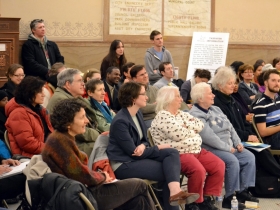
The City Hall Rotunda was packed with UWM urban studies students and professors, community organizers, city employees and homeowners. Photo by Grace Fuhr.
Over 10 million Americans are “underwater” on their mortgages, making last Friday’s panel discussion at City Hall, sponsored by the UWM Urban Studies Programs, a relevant discussion to a large audience. Entitled “Urban Housing, Neighborhood Vitality and the Foreclosure Crisis,” the discussion drew a crowd: the City Hall rotunda was packed with UWM urban studies students and professors, community organizers, city employees, and homeowners interested in learning more about how the foreclosure crisis continues to affect Milwaukee.
The speakers had varied backgrounds, and included the Commissioner of the Department of Neighborhood Services, Art Dahlberg; 3rd District Alderman Nik Kovac; Executive Director of Historic Milwaukee, Anna-Marie Opgenorth; and the President of the Metropolitan Milwaukee Fair Housing Council, William Tisdale. The panel was moderated by UWM History and Urban Studies professor, Amanda Seligman.
While Kovac represents a district with only three city-owned foreclosed properties, Milwaukee’s foreclosure crisis is a city-wide problem, he noted. He held up a map showing where the city’s foreclosures are concentrated, dramatizing this spreading problem from the city’s heart. Kovac explained how this crisis hits the city in two ways: the city has become the owner of just over 1,000 properties it now pays to maintain, while simultaneously losing the property taxes once paid. Department of Neighborhood Services Commissioner Dahlberg painted a stark picture of city blocks where foreclosed properties sit, which can create a gap tooth in a neighborhood’s smile.
A discussion about housing in Milwaukee has to recognize the city’s segregation issues, and history of racist real estate practices such as red-lining. Tisdale of the Metropolitan Milwaukee Fair Housing Council discussed how the foreclosure crisis has disproportionately affected Milwaukee’s neighborhoods of color. The root causes of that go back several generations, but even today the subprime lending and other mortgage scams continue to target communities of color.
The panel accompanied an exhibit of student work from the 2012 UWM Buildings-Landscapes-Cultures summer field school in Thurston Woods, which is on display in City Hall until February 5.


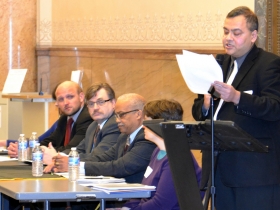
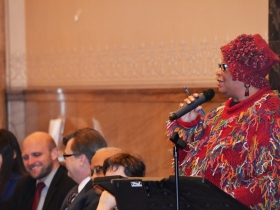
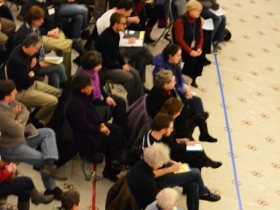
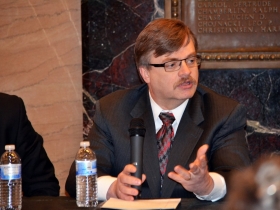
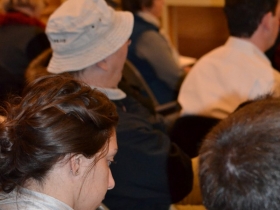


















How many City of Milwaukee Attorneys are there? How does that compare to other comparably sized cities? And how much time do they spend investigating banks and lenders?
http://www.bloomberg.com/news/2011-05-12/foreclosures-prompt-four-u-s-cities-to-sue-banks-for-mowing-home-repairs.html